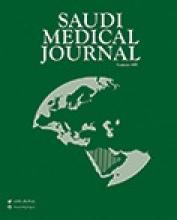12 NOVEMBER 2015 ¦ GENEVA - The number of measles-related deaths has decreased 79% from 546 800 at the beginning of the century to 114 900 in 2014. New data released by WHO for the Measles & Rubella Initiative, estimates that 17.1 million lives have been saved since 2000, largely due to increased vaccination coverage against this highly contagious viral disease. Measles vaccination has played a key role in reducing child mortality and in progress towards Millennium Development Goal 4.
However, the new data published in this week’s edition of the Centers for Disease Control and Prevention’s (CDC), “Morbidity and Mortality Weekly Report” and WHO’s “Weekly Epidemiological Record”, shows that overall progress towards increasing global immunization coverage has recently stagnated. While coverage with the first dose of the measles vaccine increased globally from 72% to 85% between 2000 and 2010, it has remained unchanged the past 4 years.
“We cannot afford to drop our guard,” says Dr Jean-Marie Okwo-Bele, Director of WHO’s Department of Immunization, Vaccines and Biologicals. “If children miss routine vaccination and are not reached by national immunization campaigns, we will not close the immunization gap.”
Based on current trends of measles vaccination coverage and incidence, the 2015 global milestones and measles elimination goals set by WHO’s Member States will not be achieved on time.
Although all countries include at least 1 dose of measles-containing vaccine in their routine vaccination schedule, only 122 (63%) have met the target of at least 90% of children vaccinated with a first dose. Additionally, only half of the world’s children are receiving the recommended second dose of the vaccine.
Success of immunization campaigns
In 2014, mass vaccination campaigns led by country governments with support from the Measles & Rubella Initiative and Gavi, the Vaccine Alliance, reached approximately 221 million children. Twenty-nine countries supplemented their routine vaccination programmes with mass immunization campaigns, helping to reduce measles incidence in 4 out of 6 WHO regions last year. Overall, since 2000, these campaigns have enabled 2 billion children to receive a supplemental dose of measles vaccine.
In the African Region, cases dropped from over 171 000 in 2013 to under 74 000 in 2014, likely due to campaigns in Democratic Republic of the Congo (DRC) and Nigeria. WHO’s Eastern Mediterranean, European and the South-East Asia regions also saw decreases in measles incidence in 2014.
Large-scale campaigns in 2014 included:
Bangladesh - more than 53.6 million children vaccinated
DRC - more than 18.5 million children vaccinated
Pakistan - more than 25 million children vaccinated
United Republic of Tanzania - more than 20.5 million children vaccinated
Yemen - more than 11.3 million children vaccinated
Viet Nam - more than 15.1 children vaccinated
“Last year, the Measles and Rubella Initiative supported campaigns in 29 high-risk countries to stop measles, including in Liberia where a serious outbreak occurred following the Ebola epidemic. Funding for many of the largest campaigns came from Gavi, the Vaccine Alliance. Gavi’s support for measles campaigns in large countries like DRC and Pakistan, and measles-rubella vaccine introduction through campaigns targeting children under 15 years of age, is providing a strong boost to measles control and elimination in those countries, “ says Dr Robert Linkins, Chief, Accelerated Disease Control and Surveillance Branch at the U.S. Centers for Disease Control and Prevention.
“Despite our success in these countries, globally over 100 000 children needlessly died from measles last year. That’s a tragedy which can be easily prevented if we intensify our measles surveillance and vaccination efforts,” Linkins concluded.
Measles outbreaks remain an issue
Measles outbreaks, which happen when there are gaps in vaccination programmes, continue to pose a serious challenge to meeting global targets. The Americas and Western Pacific regions saw increased numbers of cases in 2014, mostly due to large outbreaks in China, the Philippines, and Viet Nam. In other regions, although the overall number of cases fell, some individual countries still had large outbreaks, including Angola, Ethiopia, India, the Russian Federation and Somalia.
Accelerating progress
Measles is highly infectious and strong, sustained efforts are needed to maintain the current level of control. Together with changes in policies and practices in high-burden countries, vaccination and surveillance efforts need to be funded, maintained and strengthened, WHO and its partners say.
“Despite the welcome reduction in measles deaths, this highly-infectious disease continues to take a terrible toll on the lives of children around the world,” said Dr Seth Berkley, CEO of Gavi, the Vaccine Alliance. “A coordinated approach that puts stronger routine immunization at its core will be central to getting measles under control and securing further reductions in mortality from this vaccine-preventable disease.”
Available from: http://www.who.int/mediacentre/news/releases/2015/measles-vaccination/en/
- Copyright: © Saudi Medical Journal
This is an open-access article distributed under the terms of the Creative Commons Attribution-Noncommercial-Share Alike 3.0 Unported, which permits unrestricted use, distribution, and reproduction in any medium, provided the original work is properly cited.






